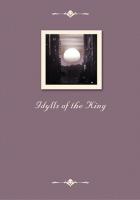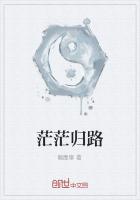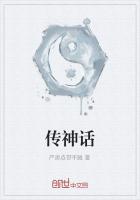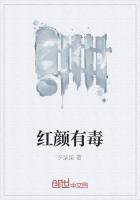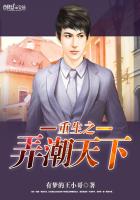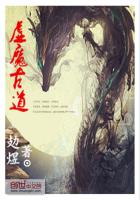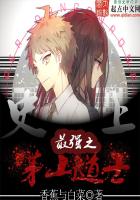Hsiang Liang used to instruct his nephew Chi [71] in the art of war. Chi got a rough idea of the art in its general bearings, but would not pursue his studies to their proper outcome, the consequence being that he was finally defeated and overthrown. He did not realize that the tricks and artifices of war are beyond verbal computation. Duke Hsiang of Sung and King Yen of Hsu were brought to destruction by their misplaced humanity. The treacherous and underhand nature of war necessitates the use of guile and stratagem suited to the occasion. There is a case on record of Confucius himself having violated an extorted oath, [72] and also of his having left the Sung State in disguise. [73] Can we then recklessly arraign Sun Tzu for disregarding truth and honesty?
Bibliography
The following are the oldest Chinese treatises on war, after Sun Tzu. The notes on each have been drawn principally from the SSU K`U CH`UAN SHU CHIEN MING MU LU, ch. 9, fol. 22 sqq.
1. WU TZU, in 1 CHUAN or 6 chapters. By Wu Ch`i (d. 381B.C.). A genuine work. See SHIH CHI, ch. 65.
2. SSU-MA FA, in 1 CHUAN or 5 chapters. Wrongly attributed to Ssu-ma Jang-chu of the 6th century B.C. Its date, however, must be early, as the customs of the three ancient dynasties are constantly to be met within its pages. See SHIH CHI, ch. 64.
The SSU K`U CH`UAN SHU (ch. 99, f. 1) remarks that the oldest three treatises on war, SUN TZU, WU TZU and SSU-MA FA, are, generally speaking, only concerned with things strictly military -- the art of producing, collecting, training and drilling troops, and the correct theory with regard to measures of expediency, laying plans, transport of goods and the handling of soldiers -- in strong contrast to later works, in which the science of war is usually blended with metaphysics, divination and magical arts in general.
3. LIU T`AO, in 6 CHUAN, or 60 chapters. Attributed to Lu Wang (or Lu Shang, also known as T`ai Kung) of the 12th century B.C. [74] But its style does not belong to the era of the Three Dynasties. Lu Te-ming (550-625 A.D.) mentions the work, and enumerates the headings of the six sections so that the forgery cannot have been later than Sui dynasty.
4. WEI LIAO TZU, in 5 CHUAN. Attributed to Wei Liao (4th cent. B.C.), who studied under the famous Kuei-ku Tzu. The work appears to have been originally in 31 chapters, whereas the text we possess contains only 24. Its matter is sound enough in the main, though the strategical devices differ considerably from those of the Warring States period. It is been furnished with a commentary by the well-known Sung philosopher Chang Tsai.
5. SAN LUEH, in 3 CHUAN. Attributed to Huang-shih Kung, a legendary personage who is said to have bestowed it on Chang Liang (d. 187 B.C.) in an interview on a bridge. But here again, the style is not that of works dating from the Ch`in or Han period. The Han Emperor Kuang Wu [25-57 A.D.] apparently quotes from it in one of his proclamations; but the passage in question may have been inserted later on, in order to prove the genuineness of the work. We shall not be far out if we refer it to the Northern Sung period [420-478 A.D.], or somewhat earlier.
6. LI WEI KUNG WEN TUI, in 3 sections. Written in the form of a dialogue between T`ai Tsung and his great general Li Ching, it is usually ascribed to the latter. Competent authorities consider it a forgery, though the author was evidently well versed in the art of war.
7. LI CHING PING FA (not to be confounded with the foregoing) is a short treatise in 8 chapters, preserved in the T`ung Tien, but not published separately. This fact explains its omission from the SSU K`U CH`UAN SHU.
8. WU CH`I CHING, in 1 CHUAN. Attributed to the legendary minister Feng Hou, with exegetical notes by Kung-sun Hung of the Han dynasty (d. 121 B.C.), and said to have been eulogized by the celebrated general Ma Lung (d. 300 A.D.). Yet the earliest mention of it is in the SUNG CHIH. Although a forgery, the work is well put together.
Considering the high popular estimation in which Chu-ko Liang has always been held, it is not surprising to find more than one work on war ascribed to his pen. Such are (1) the SHIHLIU TS`E (1 CHUAN), preserved in the YUNG LO TA TIEN; (2) CHIANGYUAN (1 CHUAN); and (3) HSIN SHU (1 CHUAN), which steals wholesale from Sun Tzu. None of these has the slightest claim to be considered genuine.
Most of the large Chinese encyclopedias contain extensive sections devoted to the literature of war. The following references may be found useful: --T`UNG TIEN (circa 800 A.D.), ch. 148-162.
T`AI P`ING YU LAN (983), ch. 270-359.
WEN HSIEN TUNG K`AO (13th cent.), ch. 221.
YU HAI (13th cent.), ch. 140, 141.
SAN TS`AI T`U HUI (16th cent).
KUANG PO WU CHIH (1607), ch. 31, 32.
CH`IEN CH`IO LEI SHU (1632), ch. 75.
YUAN CHIEN LEI HAN (1710), ch. 206-229.
KU CHIN T`U SHU CHI CH`ENG (1726), section XXX, esp. ch. 81-90.
HSU WEN HSIEN T`UNG K`AO (1784), ch. 121-134.
HUANG CH`AO CHING SHIH WEN PIEN (1826), ch. 76, 77.
The bibliographical sections of certain historical works also deserve mention: --CH`IEN HAN SHU, ch. 30.
SUI SHU, ch. 32-35.
CHIU T`ANG SHU, ch. 46, 47.
HSIN T`ANG SHU, ch. 57,60.
SUNG SHIH, ch. 202-209.
T`UNG CHIH (circa 1150), ch. 68.
To these of course must be added the great Catalogue of the Imperial Library: --SSU K`U CH`UAN SHU TSUNG MU T`I YAO (1790), ch. 99, 100.
Footnotes
1. SHI CHI, ch. 65.
2. He reigned from 514 to 496 B.C.
3. SHI CHI, ch. 130.
4. The appellation of Nang Wa.
5. SHI CHI, ch. 31.
6. SHI CHI, ch. 25.
7. The appellation of Hu Yen, mentioned in ch. 39 under the year 637.
8. Wang-tzu Ch`eng-fu, ch. 32, year 607.

